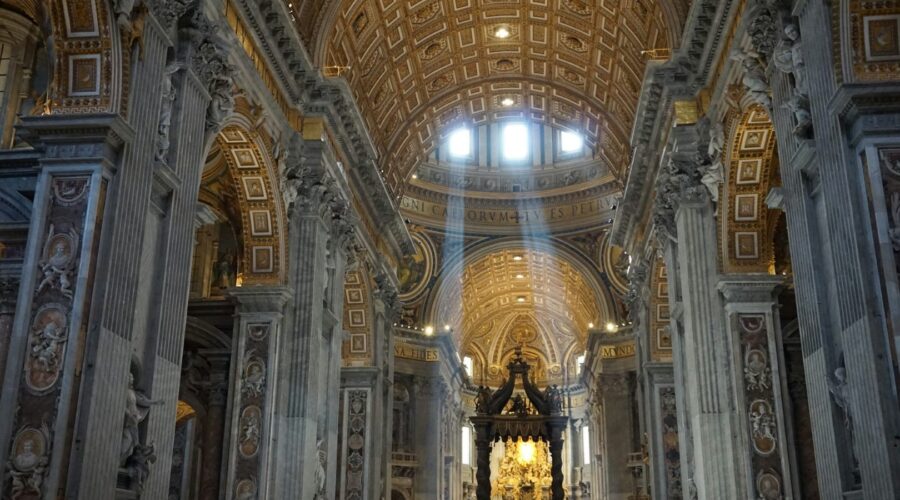Your cart is currently empty!
Unveiling the Grandeur of St. Gregory the Great Church: A Journey Through History and Architecture

History and Significance
Nestled in the heart of Rome, St. Gregory the Great Church stands as a testament to centuries of faith and architectural evolution.
The church’s origins trace back to the 6th century, when Pope Gregory I commissioned its construction on the site of a former temple dedicated to the goddess Diana. Saint Gregory, a renowned theologian and the first Benedictine pope, is revered as one of the most influential figures in Western Christianity.
Over the centuries, the church underwent numerous renovations and expansions. In the 16th century, a major restoration project commissioned by Pope Sixtus V transformed its facade and interior. The Baroque-era additions further embellished the church, adding opulent decorations and a grand cupola.
Architectural Marvel
St. Gregory the Great Church is an architectural masterpiece that blends various artistic styles, from the ancient foundations to the Baroque enhancements.
Classical Foundations
The church’s lower levels reflect its classical origins. The granite columns and arches supporting the nave and aisles hark back to the days of the Roman Empire.
Renaissance Elegance
The 16th-century renovations introduced Renaissance elements into the church. The harmonious proportions and elegant details, such as the medallions and busts of saints, exemplify the era’s artistic principles.
Baroque Splendor
The Baroque period brought a dramatic transformation to St. Gregory’s interior. The ceiling of the nave was adorned with a magnificent fresco by Guido Reni depicting the Glorification of Saint Gregory. The walls were decorated with elaborate stucco moldings, and the sanctuary was adorned with a gilded altar.
The crowning glory of the church is its massive cupola, designed by Giacomo Della Porta and completed in the 17th century. Its soaring height and intricate decorations create an awe-inspiring effect.
Interior Splendors
Beyond its architectural beauty, St. Gregory the Great Church houses a wealth of artistic treasures:
- Altar of St. Gregory the Great: The main altar, designed by Carlo Maderno, features a marble relief of Saint Gregory and a renowned mosaic depicting the Last Supper.
- Cappella Salviati: This side chapel, added in the 17th century, showcases a painting by Ascensio Salviati entitled the “Madonna and Child.”
- Oratory of St. Paul: This small chapel contains a 9th-century fresco depicting the life of St. Paul.
- Baptismal Font: The church’s baptismal font, dating back to the 15th century, is a beautiful example of Renaissance craftsmanship.
Monastery and Gardens
Adjacent to the church is the Benedictine monastery, founded by Saint Gregory. The monastery is now home to a community of Benedictine monks who continue the traditions of monastic life and scholarship.
The church and monastery are surrounded by tranquil gardens, offering a serene escape from the bustle of Rome. The gardens feature a variety of plant life, including ancient olive trees and blooming flowers.
Visiting Information
St. Gregory the Great Church is open to the public daily. Visitors are encouraged to dress respectfully and maintain a quiet demeanor.
Address: Piazza San Gregorio Magno, 1
Hours: Open daily, 7:30am – 7:00pm
Admission: Free
Conclusion
St. Gregory the Great Church is a captivating destination that combines historical significance, architectural splendor, and artistic treasures. Its centuries-long journey from ancient foundations to Baroque extravagance has created a masterpiece that continues to inspire and awe visitors to this day.